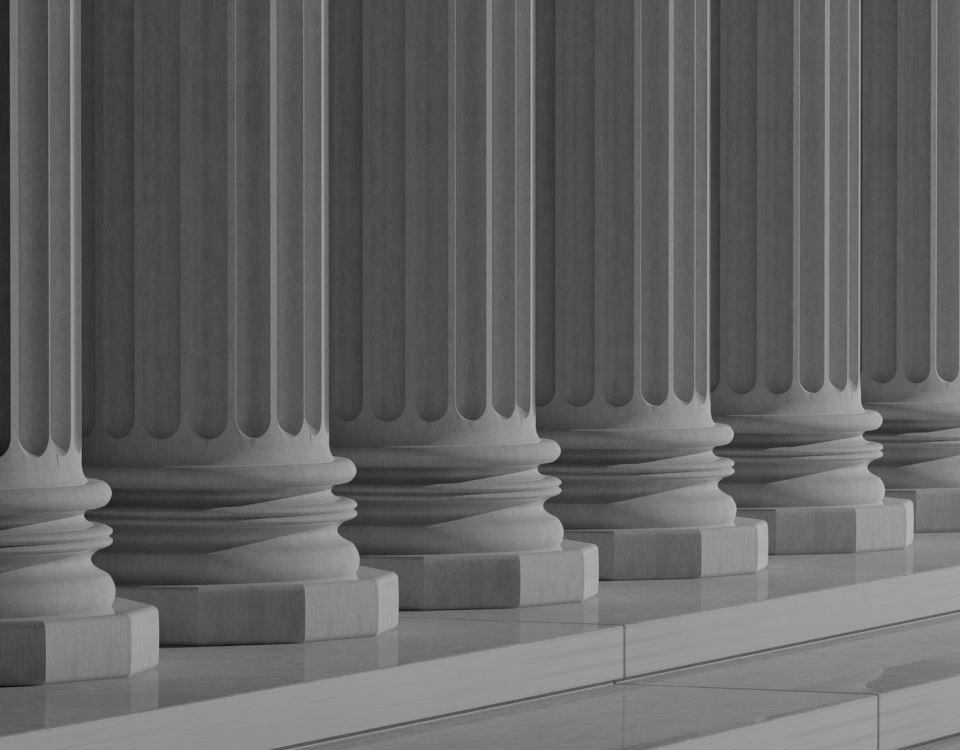
So … About that vacancy for the position of Chief Military Judge …
September 24, 2020
Judgments as ‘Remedial Measures’ – What we can learn from recent developments
October 2, 2020Military Judicial Independence: I have heard of orders, and rumours of orders …
It appears that the Chief of the Defence Staff (CDS) has, in fact, suspended his order of 2 October 2019, entitled: Designation of Commanding Officers with respect to Officers and Non-Commissioned Members on the Strength of the Office of the Chief Military Judge Dept ID 3763 (the ‘Designation Order’).
It also appears that he did so for the same reasons that I described in my Blog post of 24 September 2020.
I am not suggesting that the CDS did so because of my Blog post. It appears that the CDS ‘suspended’ the impugned Designation Order on 15 September 2020. Not that the Canadian public or even the general membership of the Canadian Forces would have been aware of that. It appears that the order was not widely promulgated or publicized – and therein lies an important concern.
In light of the significance of the Designation Order and the notoriety of its impact on the Code of Service Discipline (what the JAG tends to define as ‘military justice’), I suggest that it is both significant and troubling that the order ‘suspending’ the Designation Order was issued very quietly.
The Suspension Order
Before we discuss this matter further, it would likely be helpful if we had a common frame of reference. Since neither the CDS nor any other actor in this drama has seen fit to make the ‘Suspension Order’ available to the broader CF community or the Canadian public, I shall do so:
We can see from this instrument that the CDS has suspended his order, dated 2 October 2019, pending the outcome of the appeals that have been brought by the Minister (or, more accurately, by the Director of Military Prosecutions (DMP) on behalf of the Minister) regarding the series of recent judgments at court martial that stayed prosecutions in light of the CDS’ refusal to rescind the impugned Designation Order.
The immediate question that comes to mind is: Why was this ‘suspension order’ not announced or promulgated more notoriously?
Consider the following: When the Canadian Forces purported to alter the rank designations for junior non-commissioned members who wear ‘naval uniform’, they did so publicly and notoriously. Notwithstanding that a General or Flag Officer cannot amend article 3.01 of the Queen’s Regulations and Orders for the Canadian Forces (QR&O) by issuing a CANFORGEN, the senior leadership of the Canadian Forces were still quite ‘public’ about their purported policy change. Presumably, they did so because a public and notorious promulgation of the new policy (notwithstanding that it would have no force of law) was important for the discipline, efficiency, and morale of the Canadian Forces. The Deputy Commander of the Royal Canadian Navy (RCN) expressed, on the RCN Facebook page, transparent and public sentiments about the change to the rank designations and (ironically) the importance of complying with the Rule of Law.
In contrast, when the CDS suspended his impugned Designation Order, on 15 September 2020, there was no such public and notorious announcement. Even on a favourable interpretation of the judgments since R v Master-Corporal Pett, 2020 CM 4002, Military Judges had been calling upon the CDS to rescind the impugned order since, at the very latest, mid-July 2020, when Commander Sukstorf issued her decision in R v Major Bourque, 2020 CM 2008. A less charitable interpretation would be that, since February of this year, the CDS ought reasonably to have realized that maintaining that order would have been unsustainable. Certainly, when military judges began staying prosecutions in the face of the CDS’ intransigence, the issue of judicial independence in the face of the impugned Designation Order would have been compellingly obvious to the Office of the JAG and the CDS.
As the CDS acknowledges in his Suspension Order of 15 September 2020, the suspension of his Designation Order of 2 October 2019 was done in the interests of preserving the Code of Service Discipline, which the CDS states is “… essential to maintain the discipline, efficiency, and morale of the …” Canadian Forces.
So why was the ‘suspension’ of the impugned Designation Order not made more public?
After all, the judgments in which military judges repeatedly held that the impugned order was invalid and must be rescinded were all notoriously public. The judgments in which military judges repeatedly stayed prosecutions because of the CDS’ refusal to rescind the impugned Designation Order were all notoriously public. Notoriously and publicly promulgating the Suspension Order would have been beneficial in reinforcing that the Code of Service Discipline is essential in the maintenance of the discipline, efficiency, and morale of the Canadian Forces.
It appears that counsel in the Canadian Military Prosecution Service (CMPS), who work under the supervision of DMP, received a copy of this order on the same day that it was issued. Presumably, the legal officers within the ‘Military Justice Division’ of the Office of the JAG would have played a role in drafting the Suspension Order and would have received a copy shortly after it was issued. Presumably, out of a sense of prudence, counsel in the CMPS would have sent a copy to the counsel in Defence Counsel Services.
All of this is largely speculative, as there has been very little (if any) public comment about the Suspension Order. It is also unclear whether the Suspension Order was promulgated among all legal officers in the Office of the JAG, particularly those who are posted to positions in Regional Services. After all, those legal officers are expected to provide advice to commanders and decision-makers ‘in the field’ who will wish to apply the Code of Service Discipline within their units, formations, and commands. Without direct knowledge of (i.e. a copy of) the Suspension Order from the CDS, how could those legal officers be expected to provide accurate and reliable legal advice to those decision-makers?
Why so secretive?
Why does a non-classified, non-designated order have to be treated with such secrecy? Why was it not announced as publicly as the CANFORGEN that purported to alter the rank designations for certain NCM?
Note too that, for some reason, the Suspension Order made explicit reference to the fact that the Canadian Forces Organization Order (CFOO) that organizes the Office of the Chief Military Judge “… remains in effect”. On first glance, that would appear to be an unnecessary statement.
Unlike the impugned Designation Order of 2 October 2019, CFOO 3763 was not declared by military judges to have contravened section 11(d) of the Canadian Charter of Rights and Freedoms (Charter). While the impugned Designation Order was related to CFOO 3763, the CFOO was not the subject of the Charter applications. So why mention it?
Could it be that it was a subtle indication by the CDS or other CF actor of an intent to rely on the CFOO in order to exert disciplinary authority over military judges? Or was it simply a manifestation of the ongoing reluctance by the CDS and/or JAG to cede any ‘disciplinary terrain’ in this ongoing battle of wills? Was it, essentially, a subtle statement along the lines of: “Fine – I will suspend (but not rescind) my earlier Designation Order, but I will assert my authority by reiterating the validity of the CFOO.”?
Organization of the Office of the Chief Military Judge
It is difficult to generate any public discourse on the issues of the organization of the Office of the Chief Military Judge. The two principal instruments relating to the establishment of that element (or unit) of the Canadian Forces are: the Ministerial Organization Order (MOO) issued by the Minister of National Defence pursuant to section 17 of the National Defence Act (NDA), and the CFOO, issued by (or under the authority of) the CDS, pursuant to section 18 of the NDA. However, neither of these documents is readily available to the public.
The website for the Office of the Chief Military Judge, which is publicly available, describes the Office of the Chief Military Judge as follows:
Office of the Chief Military Judge
As an independent judicial organization, the Office of the Chief Military Judge is a federal organization that conducts its activities at arm’s length from the Government of Canada, which includes the Department of National Defence and the Canadian Armed Forces. The military judges preside at courts martial and other judicial proceedings when required. The services provided by the personnel of the Office support the institutional independence of the court martial, and simultaneously the military judiciary, by delivering court administration and effective and efficient provision of administrative services.
Quite frankly, a fair bit of what is conveyed in that paragraph is presently in dispute. Certainly, the now suspended Designation Order tended to belie the claim that the Office of the Chief Military Judge is truly independent or arm’s length from the executive. The CFOO, which remains in effect, would also tend to suggest that this independence may be in doubt.
MOO and CFOO
A MOO and CFOO function in tandem. The Minister establishes a unit, formation, command, or other element of the CF by issuing a MOO. In addition to establishing the unit, formation, command, or other element, the MOO will organize it and, if necessary, embody it in a component of the Canadian Forces (e.g. the Regular Force or the Reserve Force). The MOO may also assign a unit, formation, or other element to a formation or command and may grant certain powers or functions to the officer who commands the unit, formation, command, or other element.
The CDS issues a CFOO, which is predicated upon the MOO, and will generally perform the following functions: (a) it will assign the unit, formation, or other element to a formation or command, if the Minister has not already done so; (b) it will identify the officer to whom the commanding officer or commander of the unit, formation, or other element is responsible for matters of administration and discipline (essentially establishing the ‘chain of command’); and, (c) it will issue additional administrative instructions such as organization of personnel or other administration.
Neither document is publicly available. The CFOO is available via the website for the Chief of Programme (C Prog), but only via the CF’s intranet system, the Defence Wide Area Network (DWAN). The MOO is not publicly available, even via the DWAN. Arguably, both documents could be requested under an Access to Information request – provided you have the time to wait.
Neither of these documents is classified (e.g. Secret or Top Secret) or designated (Protected A, B, or C). There is no reason why they could not be more easily accessible. At the very least, there is no reason why the MOO would not be as accessible as the CFOO – after all, the CFOO are issued when the Minister establishes a unit, formation, command or other element of the CF.
And these documents are fundamental instruments in establishing the chain of command for matters of discipline and administration. They form part of the ‘building blocks’ of the Canadian Forces. But they are not readily available for public scrutiny.
Notwithstanding that they are presumably not classified or designated, there may be valid reasons not to make such documents readily available to the public. There is no express duty or obligation for the Minister, CDS, or any other Crown actor to promulgate the documents to the public. But “… context is the indispensible handmaiden to … proper characterization …” (Thomson Newspapers Co. v Canada (Attorney General), [1998] 1 SCR 877). The decision to publish or announce orders governing the Canadian Forces will, reasonably, turn on the specific context.
Conclusion
In the present context, I suggest that there was a compelling policy reason for the CDS to promulgate his Suspension Order more widely and notoriously than has been done. Arguably, in light of the constitutional significance of the independence of the military judiciary, and the role of the Code of Service Discipline in maintaining the discipline, efficiency, and morale of the Canadian Forces, there may also have been a compelling legal rationale for doing so. After all, the CDS purportedly issued the Suspension Order in order to sustain the essential functions of the Code of Service Discipline in the face of a very public battle of wills with the Military Judges. It is unfortunate that this order, issued nearly 2 weeks ago, and four days after Commander Pelletier issued his judgment and stay of prosecution in R v Captain Iredale, 2020 CM 4011, was not published more notoriously.
I have frequently encountered circumstances in which an officer or NCM has been punished or subjected to administrative measures for failing to appreciate the impact of his or her inaction when faced with a contentious circumstance. Fortunately for the CDS, he sits at the apex of the Canadian Forces, and, from a practical perspective, would not be subject to such disciplinary or administrative measures for failing to suspend his Designation Order earlier, and for not taking adequate steps to promulgate his Suspension Order in a more notorious manner.




